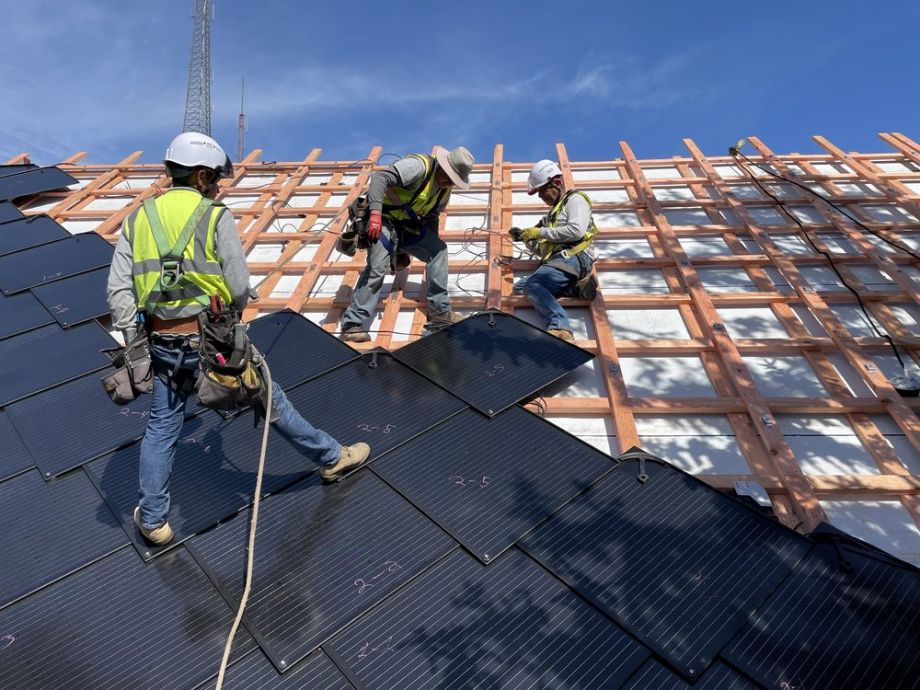The federal government has seen a series of bipartisan wins to promote a sustainable future for our country, most recently with the passage of the Inflation Reduction Act (IRA). The IRA is a landmark bill to combat climate change. Combined with the Infrastructure Investment and Jobs Act, it gives our country a once in-a-lifetime opportunity to modernize the electric grid, create a distributed energy future, and put money into the pockets of anyone who wants to participate.
There are two types of solar programs that will be critical to achieving these goals. One is feed-in-tariff programs, where solar energy is sent to the grid and bought by utilities. Then there’s community solar, which allows any customer to sign up to power their homes and buildings with renewable energy – and lower their monthly utility bill – without installing their own on-site solar project.
These small-scale programs allow for solar projects to be capitalized not only from investment tax credits administered by the IRS, but with debt from financial institutions willing to lend against the stable cash flows from utilities. The country needs to leverage multiple forms of debt, equity and subsidies to create a lasting Distributed Energy Resources (DERS) industry for decades to come. As it stands now, about half the country is being left behind by state legislatures that have not instructed their Public Service Commissions to open these programs.
Right now, 22 states – from South Carolina to Maine, from California to Minnesota – have policies on the books that promote the creation of feed-in-tariff or community solar projects. Rhode Island, in particular, has created a model that’s worth examining and replicating across the U.S.
In the town of West Warwick, my company, Fairstead, completed the installation of solar panels on the roofs of Echo Valley, a 100-apartment affordable housing complex, and enrolled in Rhode Island’s Community Remote Distributed Generation (CRDG) program. It was the first affordable housing development in the state to participate.
Despite the fact that this project was completed prior to the IRA, the fair revenues provided by our partner, National Grid, allowed this project to be financed with tax credits and the private debt market.
Residents who sign on to the program see savings of 8-12% off their bill. That means that the community is saving money on utilities, freeing them up to spend on other necessities such as food, education and transportation. It’s also addressing a long-standing challenge in America where solar projects and renewable energy benefits disproportionately favor wealthier communities.
The reason we were able to make this a reality is because Rhode Island requires its utilities to pay for the clean energy we generate. This creates a sustainable model incentivizing the creation of solar that can be backed by the private and financial sectors.
The IRA is step one for kickstarting the creation of solar projects. It provides a 30% tax credit for all solar installations, which is a tremendous way to get people moving and pay for the initial cost of the installation. But this is a one-time credit.
Technologies advance, costs increase, systems break. If you develop your program, but years down the line the solar project has significant maintenance needs without a way to pay for them, systems may languish or be abandoned.
The true opportunity to leverage the IRA for solar production exists in the model Rhode Island has created: Establishing long-term agreements at the state level for the providers to sell their electricity at fair prices, giving banks the ability to lend against it. This creates ongoing revenue sources to maintain the solar facilities that will no doubt be sparked by the IRA.
This can also benefit individual homeowners. In many states, homeowners only receive the benefit of solar power to offset their own personal energy usage. But if a homeowner has the chance to generate passive income from additional solar energy production, many will jump at this opportunity. It will drive a new era of solar projects.
This will require our one-way energy system – power plants to consumers – to become a two-way street. Yes, infrastructure upgrades will need to be planned accordingly, but it’s worth it. We cannot miss this opportunity to leverage the IRA to create a self-sufficient industry for clean energy. We all can have a stake in energy production, not just consumption.
Public Service Commissions who have not instituted these programs yet, and the legislative bodies who oversee them, must realize the benefits of these programs to create a thriving solar energy market and reduce our reliance on fossil fuels.
Given the urgent climate need and the scale of the challenge before us, that is an opportunity we simply cannot let pass us by.
Tyler McIntyre is a Managing Partner for Design & Construction at Fairstead, a national developer of affordable housing with a presence in 28 states.








